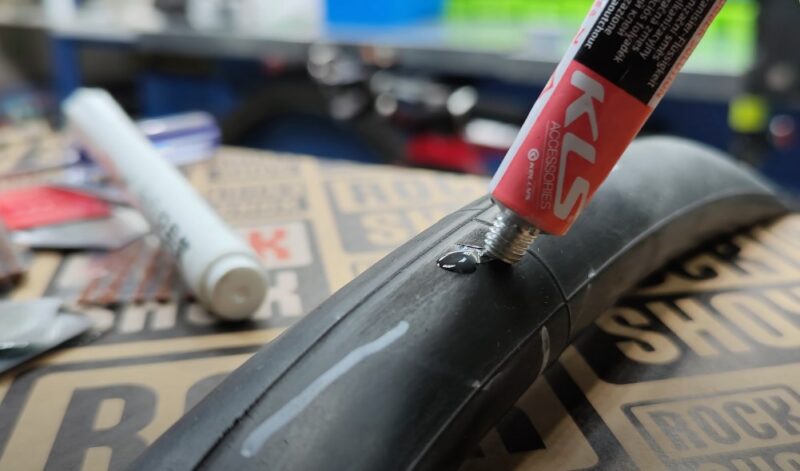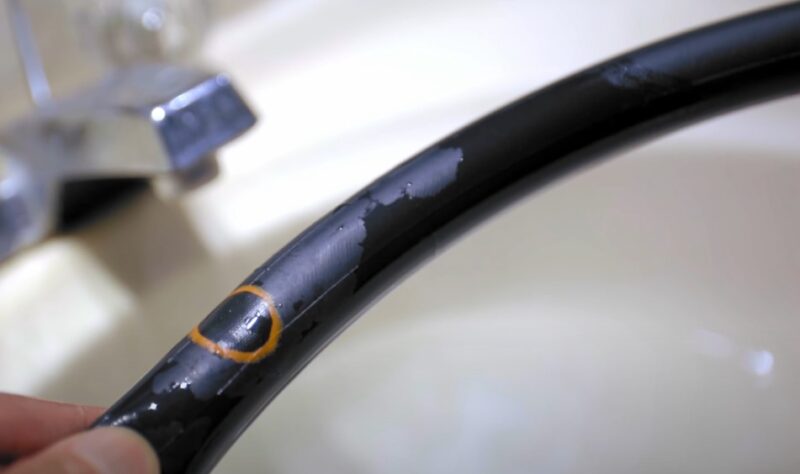
As a passionate cyclist, you know the importance of maintaining your bike’s tires to ensure a smooth, reliable ride.
One crucial aspect of tire maintenance is understanding the lifespan of bike tire patches and when it’s time to replace your inner tube.
Let us talk about how frequently should you change it.
Key Takeaways
- Bike tire patches can last for months or even years with proper care and maintenance.
- Factors like patch size, tube material, and riding conditions impact patch durability.
- Proper patch application, clean tube surfaces, and avoiding repatching are key to maximizing patch lifespan.
- Look for signs of wear, such as cracks, holes, or bulges, to determine when it’s time to replace your inner tube.
- Investing in high-quality patches and tubes can help extend the life of your cycling equipment.
The Lifespan of Bike Tire Patches

When it comes to bike tire patches, their longevity can vary significantly. The lifespan of a bike tire patch is influenced by several key factors, including the quality of the patch itself, the condition of the tire, and the proper application of the patch.
Being aware of these elements can help cyclists extend the life of their bike tire patches and avoid the need for frequent replacements.
Factors Affecting Patch Durability
The durability of a bike tire patch is influenced by a variety of factors. The quality of the patch material, the cleanliness of the tire surface, and the pressure applied during the patching process can all impact how long the patch will last.
The type of terrain and riding conditions can also play a role in the patch’s lifespan.
- Patch material quality: Higher-quality patches made from more durable materials typically last longer than lower-quality options.
- Tire condition: Patching a tire with significant damage or wear may result in a shorter-lived repair.
- Patching technique: Proper cleaning, preparation, and application of the patch can increase its longevity.
- Riding conditions: Riding on rough terrain or in harsh weather can put more stress on bike tire patches.
Proper Patching Techniques
To ensure that your bike tire patches last as long as possible, it’s essential to follow the proper patching techniques. Start by thoroughly cleaning the tire surface, and removing any debris or old patch remnants.
Next, carefully apply the patch, ensuring it adheres securely to the tire. Finally, apply pressure to the patch for an extended period to help it bond with the tire.
| Step | Technique |
|---|---|
| Clean the Tire | Use a rag or sandpaper to remove any dirt, debris, or old patch material from the tire surface. |
| Apply the Patch | Carefully position the patch over the puncture and press firmly to ensure it adheres properly. |
| Apply Pressure | Hold the patch in place for 2-3 minutes, applying steady pressure to help it bond with the tire. |
By following these proper patching techniques and considering the factors that affect patch durability, you can maximize the lifespan of your bike tire patches and keep your bike rolling smoothly for longer.
Indicators for Replacement

As your bike tire patches age, it’s crucial to be aware of the signs that indicate it’s time for a replacement. Knowing when to replace your bike’s inner tube can help you avoid unexpected breakdowns and maintain the smooth performance of your trusty two-wheeler.
One of the most obvious signs that your tire patch needs to be replaced is recurring air leaks. If you find yourself constantly having to use bike pump, and pump up your tires, it may be a sign that the patch has lost its sealing power and can no longer effectively hold air.
You may notice visible signs of wear and tear, such as cracks, holes, or fraying around the edges of the patch.
Another key indicator is the overall effectiveness of the patch. If you find that your bike is no longer riding as smoothly or handling as responsively as it once did, it could be due to a loss of effectiveness in the patch. This can happen over time as the materials in the patch degrade and lose their ability to provide a secure seal.
Regularly inspecting your bike’s tire patches and knowing how to know when to get a new bike tube can help you stay ahead of potential issues and ensure a safe, comfortable ride.
By being proactive and replacing your tire patches at the first signs of wear, you can keep your bike running at its best and avoid the frustration of unexpected flats or repairs.
Summary
Maintaining the longevity of your bike’s tires is crucial for ensuring a safe and enjoyable riding experience.
By understanding the lifespan of bike tire patches and recognizing the signs of wear, you can proactively address any issues and keep your cycling equipment in top condition.
Proper patching techniques and timely inner tube replacement are essential for maximizing the life of your bike’s tires.
By being attentive to factors like exposure to punctures, weather conditions, and mileage, you can make informed decisions about when to repair or replace worn-out components.
Related Posts:
- Why Does My Bike Tire Keep Popping? (And How to Fix It)
- What is Considered a Long Bike Ride? (25, 40, or 100 miles?)
- Bike Pump Not Working? (6 Common Problems and Solutions)
- Why Bicycle Chains Turn Black (and How to Keep Them Clean)
- How to Reset Bike Lock - Follow These Easy Steps
- How to Inflate Road Bike Tires - A Step-by-Step Guide







